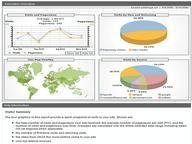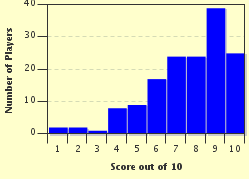Quiz Answer Key and Fun Facts
1. One of the most common statistics worldwide is a periodic count of the population. What is this known as?
2. A very common statistical measure used to indicate a country's overall health involves determining, on average, how long someone born in a particular year is likely to live. What is this called?
3. House prices are followed closely by economists, who tend to favour a median (middle) measure rather than the mean (average). Why is that?
4. Statisticians can also look at possible future events to determine what changes are likely to a particular population. What are these predictions called?
5. The bell-shaped curve is also known as what type of distribution?
6. Two words you'll hear quite often in statistics are 'incidence' and 'prevalence'. Are they different words for the same concept?
7. Many statistics use percentages. What does 'per cent' actually mean?
8. Which scientist, more famously known as an astronomer than a statistician, put forward the suggestion in the 16th Century that we should "Measure what can be measured, and make measurable what cannot be measured"?
9. If I find a statistical correlation between two events A and B, it means that B was caused by A (or vice versa).
10. What term is used in statistics to describe a difference between two observations that is large enough to be considered a 'real' difference (as opposed to one generated by chance)?
Source: Author
timence
This quiz was reviewed by FunTrivia editor
WesleyCrusher before going online.
Any errors found in FunTrivia content are routinely corrected through our feedback system.

